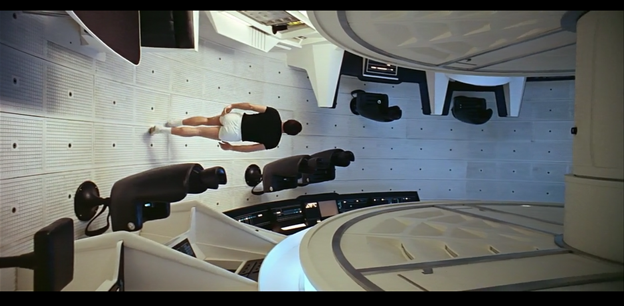ONWARDS to my actual topic: SPAAACEships.
Specifically, trying to design approximately dieselpunk spaceships for the alt history game setting I'm working on with the Moon Marines. Trying to make them mostly realistic with the caveat of the setting featuring a couple elements of superscience to allow for spacefaring shenanigans without recordkeeping to manage keeping tabs on reaction mass and such. TL;DR of the setting is it's way later in time, humanity has been pulled into the future during the Manhattan Project and given some alien tech to reverse engineer. They fix/break it, and start exploring. I'm considering giving the ships a modernized WWII kind of vibe, and having a lot of spaceships able to land on the water due to alien not-rockets permitting heavily armed and armored spaceboats. Humanity's great wealth of knowledge related to loading, crewing, and fighting aboard ships was taken advantage of, along with moderate aircraft experience and marginal space knowledge.
One of my first inspirations is the Surcouf Submarine Cruiser. It's usable as a ship, with deck space up top, and nicely sized gun turrets (enormous for a submarine). It's streamlined and has the style I want. Not the most airworthy, but that's what lifting body style tweaks and unreasonably powerful space engines, and maybe a set of stub wings that fold flat for some extra lift and to help with climbing out of atmosphere when you can't be bothered to boost into orbit on engine power alone.
Obviously it's meant to fly, at least during the transition between spaceship and regular ship. Getting around like a very well-sealed seaplane is probably faster and more effective in a vehicle powered by reactor fueled not-rockets than forcing it through/over the water. A broader body would probably be more likely, to increase space and maintain a nice airworthy wedge design.
 |
| A flying boat lifting body spaceship, you say.... |
There's always the old standby of sphere ships, which to maintain the style of the setting would probably be vaguely cube shaped and rounded in something of the nature of the M4 sherman. Not great for in atmosphere use, beyond takeoffs and landings.
But now, I come to my real problem
Gravity. I'm not using artificial gravity generation, but would like at least a small amount of gravity to allow some semblance of normal life (ability to cook in a pan, sit at a table for cards that don't need magnetism or somesuch, and so on). All gravity has to come from spin gravity, either for the whole ship or more likely having a section of the ship feature a separate centrifuge portion containing the habitation modules, or from using slight superscience to maintain felt acceleration gravity. Given that the ship is meant to be usable as a ship on the surface, there are some issues with both of these methods.
Gravity, on a normal aircraft or oceangoing ship, points downwards. produced via spingrav, portions of the ship will be upside down while in atmosphere if using an included centrifuge (which may be split into a habitation block and a region not used while in gravity or otherwise still usable while upside down, or trading some space for mechanisms to allow rooms to rotate). Simply spinning the ship about an axis is difficult due a probable lack of a nice round axis had by most ships able to land planetside. Still, if a ship has a center of gravity close enough to what would be the top deck while planetside, it can rotate such that the lower deck has spin gravity. It'll look weird as heck, but if it's weird but it works it's not weird. A tumbling pigeon design does not work with the requirements of interstellar travel within the setting.
Produced via acceleration, effective gravity will point towards the back of the ship. It's possible to arrange the whole ship for acceleration gravity, and have it point upwards while it's landed like a tail-landing craft, but that comes with its own set of challenges. Suddenly the entire ship is a spacefaring skyscraper that must be navigated by steps, ladders, manlifts, elevators, and fireman's poles. It's also weird during actual flight if you use aerodynamics rather than pure engine power. Alternatively, the engines could force the ship sideways through space, such that down is always down. This results in a rather large frontal area to heavily armor, but plays quite nicely with keeping an otherwise standard deckplan, allowing systems to be navigated via hallway and corridors with a few levels.
The other options are that the ship is just in 0G or microgravity all places except where it's absolutely necessary for something resembling normal function, or that I opt to include a crude gravity generator to the setting. Micrograv is weird but manageable, and through tech and proper design pretty easily handled. Artificial gravity requires just a little bit more handwaving than allowing small amounts of constant speed acceleration gravity thanks to warp drive effects and is easily compatible with a ship designed to also function in and out of gravity.
EDIT TO ADD:
After sleeping on it, bouncing ideas, and doing some math, it seems that flying the ship in a helical flight path can generate gravity pretty darn readily. If it's stupid but it works, it isn't stupid. It requires constant thrust, but given that the ships are reactor powered and reactionlessly driven, it's the simplest solution to the 0G problem.




No comments:
Post a Comment